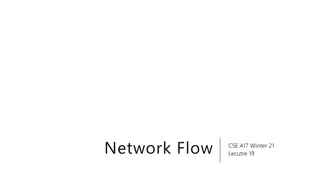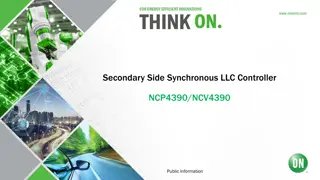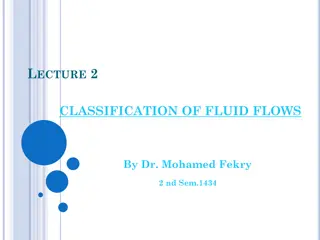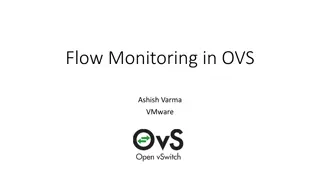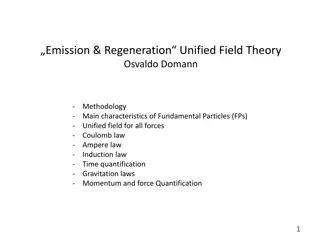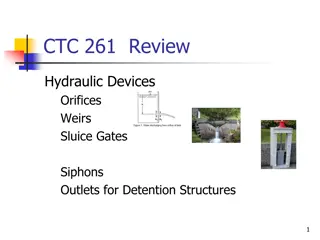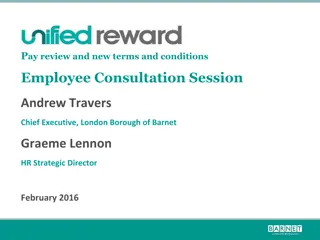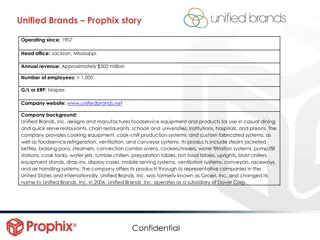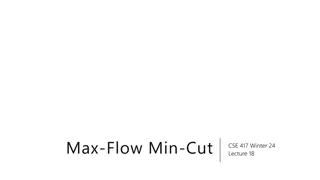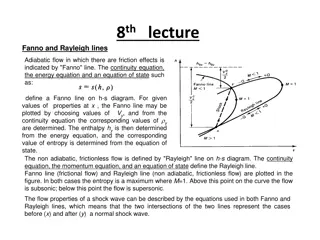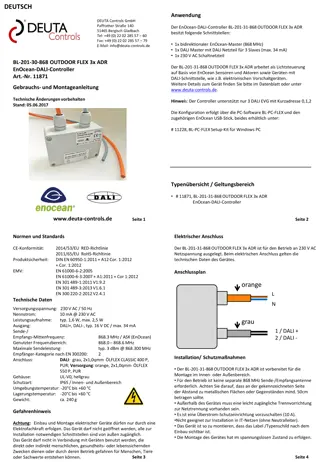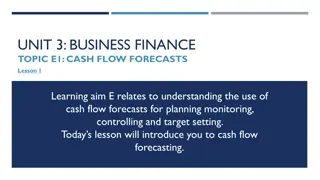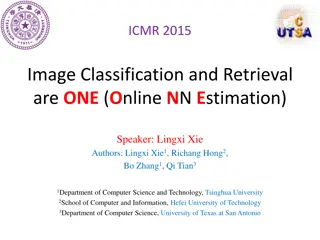Overview of Unified Power Flow Controller (UPFC) in Power Systems
A Unified Power Flow Controller (UPFC) is a combination of a Static Synchronous Compensator (STATCOM) and a Static Synchronous Series Compensator (SSSC) interconnected via a common DC link. UPFC allows bidirectional flow of real power and provides concurrent real and reactive series line compensation without external power sources. It consists of two voltage-sourced converters enabling control over transmission line voltage, impedance, power flow, and shunt-reactive compensation. The UPFC functions as an ideal AC-to-AC power converter and allows independent generation or absorption of reactive power at each output terminal.
Uploaded on Oct 01, 2024 | 1 Views
Download Presentation

Please find below an Image/Link to download the presentation.
The content on the website is provided AS IS for your information and personal use only. It may not be sold, licensed, or shared on other websites without obtaining consent from the author.If you encounter any issues during the download, it is possible that the publisher has removed the file from their server.
You are allowed to download the files provided on this website for personal or commercial use, subject to the condition that they are used lawfully. All files are the property of their respective owners.
The content on the website is provided AS IS for your information and personal use only. It may not be sold, licensed, or shared on other websites without obtaining consent from the author.
E N D
Presentation Transcript
A combination of a static synchronous compensator (STATCOM) and a static synchronous series compensator (SSSC) which are coupled via a common dc link, to allow bidirectional flow of real power between the series output terminals of the S3C and the shunt output terminals of the STATCOM, and are controlled to provide concurrent real and reactive series line compensation without an external electric energy source. The UPFC, by means of angularly unconstrained series voltage injection, is able to control, concurrently or selectively, the transmission line voltage, impedance, and angle or, alternatively, the real and reactive power flow in the line. The UPFC may also provide independently controllable shunt-reactive compensation.
The UPFC consists of two voltage sourced converters, as illustrated in Figure 8.4. These back- to-back converters, labeled "Converter 1" and "Converter 2" in the figure, are operated from a common dc link provided by a dc storage capacitor. As indicated beforereal power can freely flow in either direction between the ac terminals of the two c, this arrangement functions as an ideal ac-to-ac power converter in which the onverters, and each converter can independently generate (or absorb) reactive power at its own ac output terminal. Converter 2 provides the main function of the UPFC by injecting a voltage Voo with controllable magnitade Vro and phase angle p in series with the line via an insertion transformer. This injected voltage acts essentially as a synchronous ac voltage
Conceptual representation of the UPFC in a two-machine power system
Implementation of the UPFC by two back-to-back voltage-sourced converters
The transmission line current flows through this voltage source resulting in reactive and real power exchange between it and the ac system. The reactive power exchanged at the ac terminal (i.e., at the terminal of the series insertion transformer) is generated internally by the converter. The real power exchanged at the ac terminal is converted into dc power which appears at the dc link as a positive or negative real power demand.
The basic function of Converter 1 is to supply or absorb the real power demanded by Converter 2 at the common dc link to support the real power exchange resulting from the series voltage injection. This dc link power demand of Converter 2 is converted back to ac by Converter L and coupled to the transmission line bus via a shunt connected transformer. In addition to the real power need of Converter 2, Converter 1 can also generate or absorb controllable reactive power, if it is desired, and thereby provide independent shunt reactive compensation for the line. It is important to note that whereas there is a closed direct path for the real power negotiated by the action of series voltage injection through Converters I and 2 back to the line, the corresponding reactive power exchanged is supplied or absorbed locally by Converter 2 and therefore does not have to be transmitted by the line. Thus, Converter 1 can be operated at a unity power factor or be controlled to have a reactive power exchange with the line independent of the reactive power exchanged by Converter 2. Obviously, there can be no reactive power flow through the UPFC dc link.
It follows from the above equations that this control region is a circle with a center defined by coordinates (Po( )Qo,( )) and a radius of V,VrlX.
Control region of the attainable real power P and receiving-end reactive Power UPFC-controlled transmission line at = 0,30,60,90 degrees




